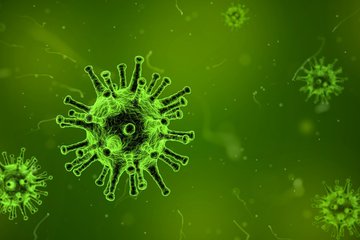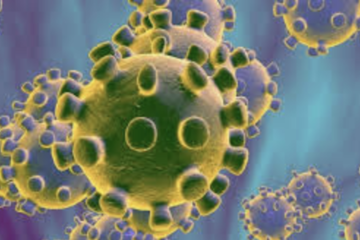Browse
Posted on: #iteachmsu

DISCIPLINARY CONTENT
Air pollution
Air pollution, release into the atmosphere of various gases, finely divided solids, or finely dispersed liquid aerosols at rates that exceed the natural capacity of the environment to dissipate and dilute or absorb them. These substances may reach concentrations in the air that cause undesirable health, economic, or aesthetic effects.
Authored by:
Anjali Yadav

Posted on: #iteachmsu


Air pollution
Air pollution, release into the atmosphere of various&nbs...
Authored by:
DISCIPLINARY CONTENT
Tuesday, Mar 31, 2020
Posted on: #iteachmsu

PEDAGOGICAL DESIGN

Posted on: #iteachmsu


Biology : 05
test video : '
test : default without center
...
test : default without center
...
Authored by:
PEDAGOGICAL DESIGN
Monday, Mar 30, 2020
Posted on: #iteachmsu

Affect in Online DiscourseAffect in Online DiscourseAffect in Online DiscourseAffect in Online Disco
Affect in Online Discourse
Affect in Online Discourse
Affect in Online Discourse
Foreword
Peter C. Doherty, in Fenner and White's Medical Virology (Fifth Edition), 2017
Basic virology has, of course, been well served by the many revisions of Bernie Fields’ (1938–1995) exhaustive text and, following the example set by Field’s Virology, the fifth edition will appear as Fenner and White’s Medical Virology. It is a fitting tribute. Taken together, the original authors, and those responsible for this latest version, have variously been active and publishing on one or the other aspect of virus-induced disease and/or pathology since 1948: and the virology lineage goes back even further!
Read full chapterView PDFDownload book
Introduction
In Viral Pathogenesis (Third Edition), 2016
Virology, together with all of biomedical sciences, is undergoing a revolution that can be encapsulated as a transition from reductionism to systems biology. This third edition of Viral Pathogenesis reflects this paradigm shift and the new perspective it brings to the field. Accordingly, this edition is organized in four different parts: (I) History and essentials of viral pathogenesis; (II) Systems-level approaches to viral pathogenesis; (III) Emergence and control of viral infections; and (IV) Past and future. Part I sets forth our knowledge based on long-established methods in pathology, virology, and adaptive immunity. This section provides the background for the rest of the book, which focuses on current and future methods and discoveries in viral pathogenesis.
Read full chapterView PDFDownload book
Adult T-Cell Leukemia-Lymphoma
Kunihiro Tsukasaki, ... Kensei Tobinai, in Abeloff's Clinical Oncology (Fifth Edition), 2014
Virology and Pathogenesis
•
HTLV-I is reverse-transcribed into DNA and randomly integrated into the host cell.
•
The HTLV-I genome encodes two unique regulatory proteins—Tax and Rex—responsible for viral expression and cellular transformation. Tax trans-activates viral and cellular genes that could be involved in the pathogenesis of ATL. HTLV-I basic leucine zipper (HTLV-I bZIP; HBZ) is an antisense transcript of HTLV-I, is steadily expressed in ATL cells, and interacts with several host genes and suppresses the activity of Tax.
Affect in Online Discourse
Affect in Online Discourse
Foreword
Peter C. Doherty, in Fenner and White's Medical Virology (Fifth Edition), 2017
Basic virology has, of course, been well served by the many revisions of Bernie Fields’ (1938–1995) exhaustive text and, following the example set by Field’s Virology, the fifth edition will appear as Fenner and White’s Medical Virology. It is a fitting tribute. Taken together, the original authors, and those responsible for this latest version, have variously been active and publishing on one or the other aspect of virus-induced disease and/or pathology since 1948: and the virology lineage goes back even further!
Read full chapterView PDFDownload book
Introduction
In Viral Pathogenesis (Third Edition), 2016
Virology, together with all of biomedical sciences, is undergoing a revolution that can be encapsulated as a transition from reductionism to systems biology. This third edition of Viral Pathogenesis reflects this paradigm shift and the new perspective it brings to the field. Accordingly, this edition is organized in four different parts: (I) History and essentials of viral pathogenesis; (II) Systems-level approaches to viral pathogenesis; (III) Emergence and control of viral infections; and (IV) Past and future. Part I sets forth our knowledge based on long-established methods in pathology, virology, and adaptive immunity. This section provides the background for the rest of the book, which focuses on current and future methods and discoveries in viral pathogenesis.
Read full chapterView PDFDownload book
Adult T-Cell Leukemia-Lymphoma
Kunihiro Tsukasaki, ... Kensei Tobinai, in Abeloff's Clinical Oncology (Fifth Edition), 2014
Virology and Pathogenesis
•
HTLV-I is reverse-transcribed into DNA and randomly integrated into the host cell.
•
The HTLV-I genome encodes two unique regulatory proteins—Tax and Rex—responsible for viral expression and cellular transformation. Tax trans-activates viral and cellular genes that could be involved in the pathogenesis of ATL. HTLV-I basic leucine zipper (HTLV-I bZIP; HBZ) is an antisense transcript of HTLV-I, is steadily expressed in ATL cells, and interacts with several host genes and suppresses the activity of Tax.
Authored by:
Chathuri

Posted on: #iteachmsu

Bacteriology
Foreword
Peter C. Doherty, in Fenner and White's Medical Virology (Fifth Edition), 2017
Basic virology has, of course, been well served by the many revisions of Bernie Fields’ (1938–1995) exhaustive text and, following the example set by Field’s Virology, the fifth edition will appear as Fenner and White’s Medical Virology. It is a fitting tribute. Taken together, the original authors, and those responsible for this latest version, have variously been active and publishing on one or the other aspect of virus-induced disease and/or pathology since 1948: and the virology lineage goes back even further!
Peter C. Doherty, in Fenner and White's Medical Virology (Fifth Edition), 2017
Basic virology has, of course, been well served by the many revisions of Bernie Fields’ (1938–1995) exhaustive text and, following the example set by Field’s Virology, the fifth edition will appear as Fenner and White’s Medical Virology. It is a fitting tribute. Taken together, the original authors, and those responsible for this latest version, have variously been active and publishing on one or the other aspect of virus-induced disease and/or pathology since 1948: and the virology lineage goes back even further!
Authored by:
chathu

Posted on: #iteachmsu


Bacteriology
Foreword
Peter C. Doherty, in Fenner and White's Medical...
Peter C. Doherty, in Fenner and White's Medical...
Authored by:
Monday, Mar 30, 2020
Posted on: #iteachmsu

virology
Foreword
Peter C. Doherty, in Fenner and White's Medical Virology (Fifth Edition), 2017
Basic virology has, of course, been well served by the many revisions of Bernie Fields’ (1938–1995) exhaustive text and, following the example set by Field’s Virology, the fifth edition will appear as Fenner and White’s Medical Virology. It is a fitting tribute. Taken together, the original authors, and those responsible for this latest version, have variously been active and publishing on one or the other aspect of virus-induced disease and/or pathology since 1948: and the virology lineage goes back even further!
Peter C. Doherty, in Fenner and White's Medical Virology (Fifth Edition), 2017
Basic virology has, of course, been well served by the many revisions of Bernie Fields’ (1938–1995) exhaustive text and, following the example set by Field’s Virology, the fifth edition will appear as Fenner and White’s Medical Virology. It is a fitting tribute. Taken together, the original authors, and those responsible for this latest version, have variously been active and publishing on one or the other aspect of virus-induced disease and/or pathology since 1948: and the virology lineage goes back even further!
Authored by:
chathu

Posted on: #iteachmsu


virology
Foreword
Peter C. Doherty, in Fenner and White's Medical...
Peter C. Doherty, in Fenner and White's Medical...
Authored by:
Monday, Mar 30, 2020
Posted on: #iteachmsu

DISCIPLINARY CONTENT
At the end of December 2019, Chinese public health authorities reported several cases of acute respiratory syndrome in Wuhan City, Hubei province, China. Chinese scientists soon identified a novel coronavirus as the main causative agent. The disease is now referred to as coronavirus disease 2019 (COVID-19), and the causative virus is called severe acute respiratory syndrome coronavirus 2 (SARS-CoV-2). It is a new strain of coronavirus that has not been previously identified in humans.
Covid-19
At the end of December 2019, Chinese public health authorities reported several cases of acute respiratory syndrome in Wuhan City, Hubei province, China. Chinese scientists soon identified a novel coronavirus as the main causative agent. The disease is now referred to as coronavirus disease 2019 (COVID-19), and the causative virus is called severe acute respiratory syndrome coronavirus 2 (SARS-CoV-2). It is a new strain of coronavirus that has not been previously identified in humans.
Authored by:
Chathuri hewapathirana

Posted on: #iteachmsu

At the end of December 2019, Chinese public health au...

Covid-19
At the end of December 2019, Chinese public health au...
Authored by:
DISCIPLINARY CONTENT
Tuesday, Mar 24, 2020
Posted on: #iteachmsu

DISCIPLINARY CONTENT
virology Artilce
Human papillomaviruses (HPVs) are ubiquitous, well adapted to their host and cleverly sequestered away from immune responses. HPV infections can be productive, subclinical or latent in both skin and mucosa. The causal association of HPV with cervical cancer, and increasingly with rising numbers of squamous cell carcinomas at other sites in both men and women, is increasingly recognised, while the morbidity of cutaneous HPV lesions, particularly in the immunosuppressed population is also significant. This chapter sets out the range of infections and clinical manifestations of the consequences of infection and its persistence and describes why HPVs are both highly effective pathogens and carcinogens, challenging to eliminate.
Authored by:
Chathuri hewapathirana

Posted on: #iteachmsu


virology Artilce
Human papillomaviruses (HPVs) are ubiquitous, well adapted to ...
Authored by:
DISCIPLINARY CONTENT
Monday, Mar 23, 2020
Posted on: #iteachmsu

DISCIPLINARY CONTENT
TESt USer Aricle : 01
Coronavirus disease (COVID-19) is an infectious disease caused by a newly discovered coronavirus.
Most people infected with the COVID-19 virus will experience mild to moderate respiratory illness and recover without requiring special treatment. Older people, and those with underlying medical problems like cardiovascular disease, diabetes, chronic respiratory disease, and cancer are more likely to develop serious illness.
The best way to prevent and slow down transmission is be well informed about the COVID-19 virus, the disease it causes and how it spreads. Protect yourself and others from infection by washing your hands or using an alcohol based rub frequently and not touching your face.
The COVID-19 virus spreads primarily through droplets of saliva or discharge from the nose when an infected person coughs or sneezes, so it’s important that you also practice respiratory etiquette (for example, by coughing into a flexed elbow).
At this time, there are no specific vaccines or treatments for COVID-19. However, there are many ongoing clinical trials evaluating potential treatments. WHO will continue to provide updated information as soon as clinical findings become available.
Stay informed:
Most people infected with the COVID-19 virus will experience mild to moderate respiratory illness and recover without requiring special treatment. Older people, and those with underlying medical problems like cardiovascular disease, diabetes, chronic respiratory disease, and cancer are more likely to develop serious illness.
The best way to prevent and slow down transmission is be well informed about the COVID-19 virus, the disease it causes and how it spreads. Protect yourself and others from infection by washing your hands or using an alcohol based rub frequently and not touching your face.
The COVID-19 virus spreads primarily through droplets of saliva or discharge from the nose when an infected person coughs or sneezes, so it’s important that you also practice respiratory etiquette (for example, by coughing into a flexed elbow).
At this time, there are no specific vaccines or treatments for COVID-19. However, there are many ongoing clinical trials evaluating potential treatments. WHO will continue to provide updated information as soon as clinical findings become available.
Stay informed:
Authored by:
Chathuri hewapathirana

Posted on: #iteachmsu


TESt USer Aricle : 01
Coronavirus disease (COVID-19) is an infectious disease caused by a...
Authored by:
DISCIPLINARY CONTENT
Sunday, Mar 22, 2020


